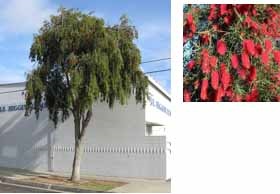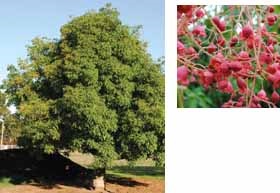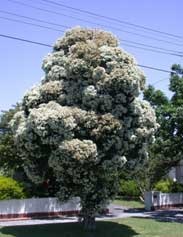Street trees in Sunnybrook Drive, Wheelers Hill
Our focus is on preserving trees that are healthy and creating additional planting in local parks and reserves to boost greenery.
We will only be removing and replacing those trees that are dead, dying (with a useful life expectancy of less than two years) or dangerous (they pose a risk to the community in the short term).
Street Tree Assessments
Our arborists have completed individual tree assessments based on the above criteria. In Sunnybrook Drive, we are proposing to remove 4 trees and will be planting a total of 11 trees which includes an additional 9 trees in vacant locations.
Replacement Tree Species
Council's arborist has proposed three appropriate tree species to be considered for planting. In some cases, we will need to select two complementary species to be planted on either side of the road to accommodate constraints such as power lines, service pits and other infrastructure that exists within the street.
A proposed street tree renewal plan including all proposed tree removals, replacements and species choices has been drafted for Sunnybrook Drive:
Sunnybrook Drive - Proposed Tree Renewal Plan(PDF, 2MB)
We sought feedback on the preferred species from all directly affected residents via an online survey or postal vote. The species of tree that receives the majority of preferences will be planted in 2020, after the removal of trees identified in the plan.
Survey Results
Council sought feedback (reply paid mail survey and online) on the preferred option of tree species directly affected residents would like to see planted in their street (until Friday 6 September 2019).
Your street has chosen Option 1 – Callistemon viminalis, "Weeping Bottlebrush”.
For Sunnybrook Drive 22 votes were received with 14 votes for Option 1.
This tree will be planted between July and September 2020 on both the power line and non-power line sides of the street.
Council will be responsible for the care of the new street trees for the first two years as they become established. However our residents can play a vital role in their successful establishment by keeping an eye on them and reporting to Council if they see the tree is not looking well or has been damaged.
The trees will then become part of Council’s annual tree maintenance program, where they will be checked and pruned, if necessary.
For more information, please contact Lucas Skelton, Manager Horticulture, on 9518 3555.
Option 1 - Single species (both sides of the road)

Callistemon viminalis - Weeping Bottle Brush
This is a pretty bird-attracting tree with a heavy crown due to the profusion of brilliant red flowers in Spring and Summer. It is the weight of these flowers that gives it a pendulous habit.
Mature Size (h x w): 6-8m x 6-8m
Form: Round
Option 2 - Single species (both sides of the road)

Brachychiton populneus x acerifolius - Jerilderie Red
This is an attractive densely canopied tree that grows to approximately 8m tall and 7m wide. It has a bloated trunk and large lobed leaves. During the summer months, the tree is densely packed with stunning powdery-red flowers that are shaped like small bells.
Mature Size (h x w): 6-8m x 6-8m
Form: Broad domed
Option 3 - Single species (both sides of the road)

Melaleuca linariifolia - Flax-leaf Paperbark
Tall shrub or small evergreen tree, dense broadly domed canopy, often multi trunked. Linear grey-green leaves. Dense spikes of fluffy, honey-scented cream flowers cover the plant in summer.
Mature Size (h x w): 6-10m x 3-8m
Form: Round